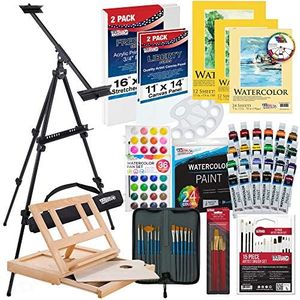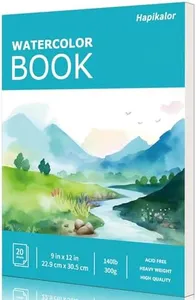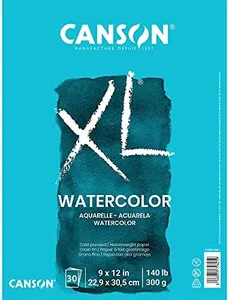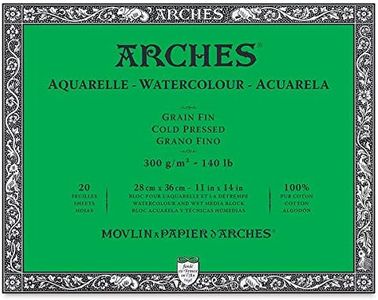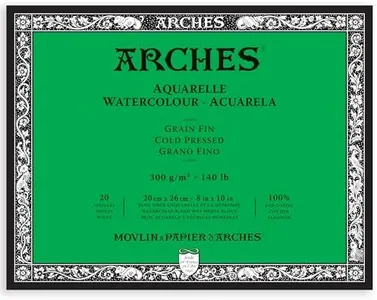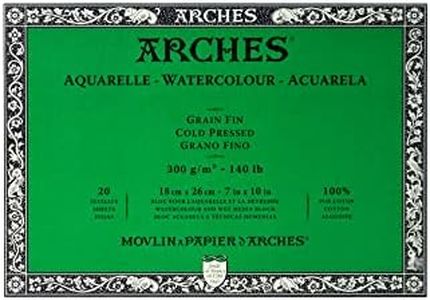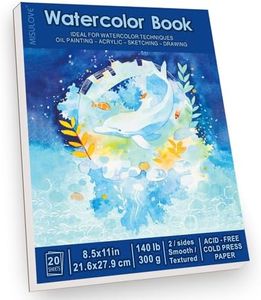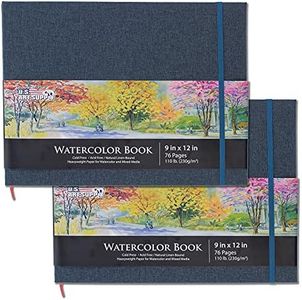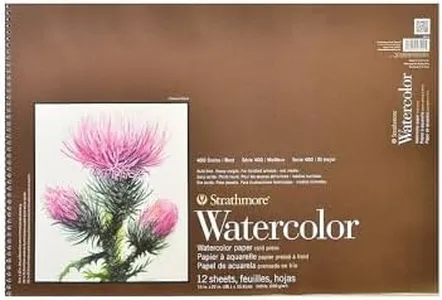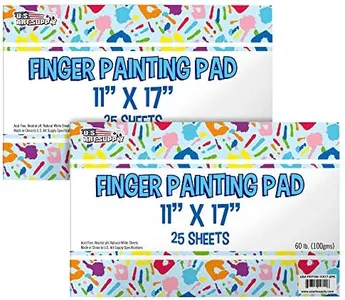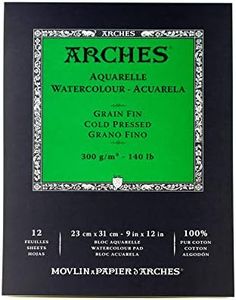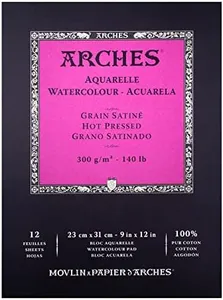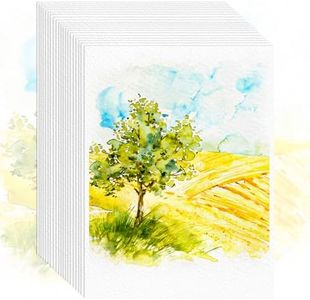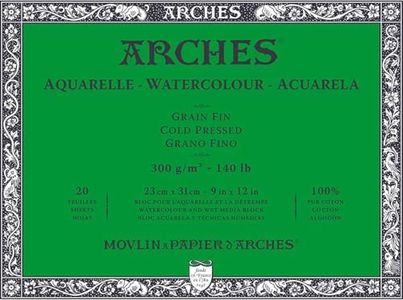10 Best Watercolor Paper 2025 in the United States
Our technology thoroughly searches through the online shopping world, reviewing hundreds of sites. We then process and analyze this information, updating in real-time to bring you the latest top-rated products. This way, you always get the best and most current options available.

Our Top Picks
Winner
Hapikalor Watercolor Paper Pad, 9"x12" Water Color Paper, 140lb/300gsm Artist Painting Drawing Paper Book, Art Supplies for Adults Kids, Watercolors, Watercolor Paint Set, Sketchbook, Journal, Teal
Most important from
1836 reviews
The Hapikalor Watercolor Paper Pad is a solid choice for both beginners and experienced artists. Measuring 9 x 12 inches, each pad contains 20 sheets of 140 lb (300 gsm) cold-pressed paper. The heavyweight nature of the paper ensures durability and the slightly textured surface is ideal for mastering various watercolor techniques.
The paper's natural white color and acid-free properties make it suitable for a wide range of media including watercolor, acrylic, colored pencils, and more, ensuring your artwork remains vibrant over time. It's a budget-friendly option, recommended by educators, which makes it particularly suitable for students and hobbyists. However, the pad contains only 20 sheets, which may not be sufficient for heavy users. Additionally, while the paper is versatile, some professional artists might prefer a higher sheet count or different textures for specialized projects.
With an FSC certification, the paper is sourced responsibly, making it an eco-friendly choice. If you're looking for affordable and versatile watercolor paper that caters to various art forms and skill levels, the Hapikalor Watercolor Paper Pad is worth considering.
Most important from
1836 reviews
Canson XL Series Watercolor Pad, Heavyweight White Paper, Foldover Binding, 30 Sheets, 9x12 inch
Most important from
31180 reviews
The Canson XL Series Watercolor Pad is a solid choice for artists looking for good-quality watercolor paper. With its cold press textured surface, it offers excellent grip for watercolors, making it ideal for both beginners and more experienced artists. The paper is heavyweight, which means it can hold up well to repeated washes without warping or tearing, allowing for a variety of techniques, including layering and wet-on-wet applications. This versatility extends to other mediums too, as it's suitable for acrylics, colored pencils, and even charcoal, catering to mixed media enthusiasts. This flexibility can be quite appealing for those who like to experiment with different styles.
On the downside, the 9x12 inch size may feel limiting for artists who prefer larger canvases to fully express their creativity. While the pad is acid-free, which is great for preserving artworks, some users may find that it does not always provide the same smooth surface as other premium watercolor papers, potentially affecting the final outcome of finer details. Additionally, while the paper's natural white color is appealing, there are those who might prefer a more off-white or textured paper for specific styles.
The Canson XL Series Watercolor Pad is a dependable paper option that balances quality and affordability, making it particularly suitable for students, hobbyists, and artists trying out different mediums. However, those seeking larger formats or specialized textures may want to explore other options. Whether you’re practicing techniques or working on finished pieces, this pad holds a lot of potential.
Most important from
31180 reviews
Arches Watercolor Paper Block, Cold Press, 11" x 14", 140 Pound
Most important from
3101 reviews
The Arches Watercolor Paper Block, sized at 11" x 14" with 20 sheets, is a top choice for artists who want high-quality paper designed specifically for watercolor painting. It features 140-pound (300 GSM) paper weight, which is sturdy enough to handle multiple washes without warping or tearing. Made from 100% cotton, this paper offers a natural white color and a cold press texture—meaning it has a slight tooth that provides a nice balance between smoothness and texture, ideal for capturing brush strokes and color variations.
What sets this block apart is its unique gelatin sizing "to the core," which helps prevent paint from soaking through and makes blending and lifting paint easier, whether wet or dry. The block is glued on all sides with a protective cover sheet to keep the paper flat and intact during use. Although it is priced higher than many basic watercolor papers, its durability, softness, and color transparency justify the investment, especially for serious hobbyists and professional artists. Some users might find the cold press texture less suitable if they prefer ultra-smooth surfaces or very rough textures, but Arches offers those options in other products.
Additionally, the block format is convenient for working on single sheets without worrying about tape or stretching. For those seeking premium watercolor paper that holds up well through detailed work and preserves art for years, this Arches block is considered a reliable and respected choice.
Most important from
3101 reviews
Buying Guide for the Best Watercolor Paper
Choosing the right watercolor paper is crucial for achieving the best results in your artwork. Watercolor paper comes in various types, weights, and textures, each suited for different techniques and styles. Understanding these specifications will help you select the paper that best fits your artistic needs and preferences.FAQ
Most Popular Categories Right Now
